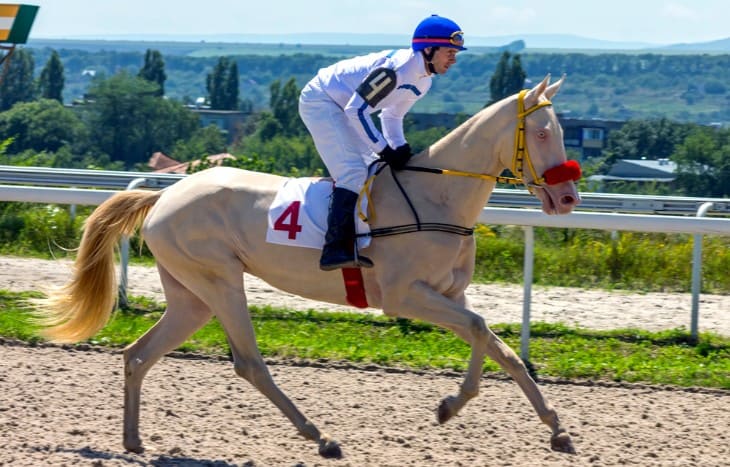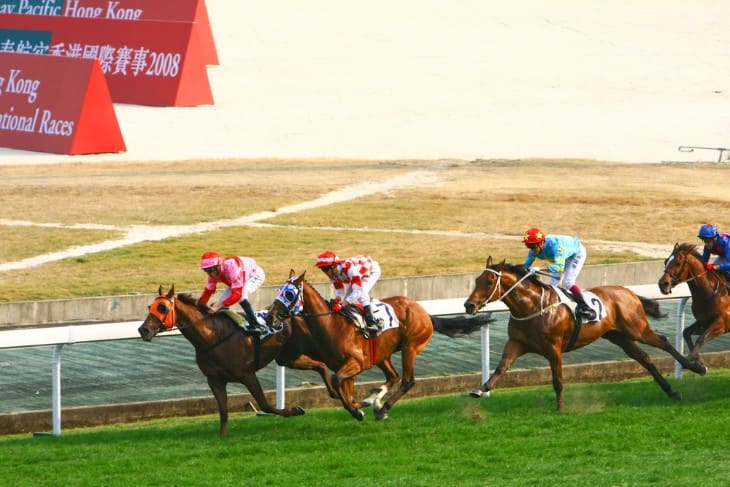- Iconic Gold Cup Winners Through the Decades
- Training Regimens for Elite Gold Cup Competitors
- Gold Cup: A Catalyst for Global Horse Racing Trends
- Course Design and Its Influence on Gold Cup Outcomes
- Innovations in Horse Racing: The Gold Cup's Contribution
- Sponsorship and Media Coverage in the Gold Cup Era
- Fan Culture and Traditions Surrounding the Gold Cup
- Conclusion
The Cheltenham Gold Cup, often simply referred to as the Gold Cup, stands as a paramount event in the British horse racing calendar. Inaugurated in 1924, it has since evolved into a prestigious National Hunt race, attracting the finest steeplechasers from across the United Kingdom and Ireland. Held annually during the Cheltenham Festival in March, the Gold Cup is not just a race; it represents the pinnacle of jump racing. The event is steeped in history, with its winners' list reading like a who's who of steeplechasing legends. The Gold Cup's significance extends beyond the sport itself, reflecting societal changes and historical events. For instance, the race was not held during certain years due to events like World War II, adding to its storied past.
Moreover, the Gold Cup has been a mirror to the advancements in horse racing, from changes in training techniques to improvements in track safety. The race has seen historic moments, such as Golden Miller's five consecutive wins in the 1930s and the legendary rivalry between Arkle and Mill House in the 1960s. These instances have not only engraved themselves in the annals of horse racing but also have contributed to the rich tapestry of British sports history. The Gold Cup remains a testament to the enduring appeal of horse racing, continually drawing large crowds and maintaining a prominent spot in the British sporting landscape.
Iconic Gold Cup Winners Through the Decades
Throughout its history, the Gold Cup has been won by many remarkable horses, each leaving an indelible mark on the sport. Some of the most iconic winners include:
- Golden Miller (1930s): Winning the Gold Cup five times consecutively from 1932 to 1936, Golden Miller remains a legendary figure in the world of steeplechasing.
- Arkle (1960s): Known for his extraordinary strength and speed, Arkle's three consecutive victories in the Gold Cup during the mid-1960s cemented his status as one of the greatest steeplechasers of all time.
- Best Mate (Early 2000s): Best Mate's three successive wins from 2002 to 2004 revived memories of the greats like Arkle, showcasing consistency and excellence.
- Kauto Star (Late 2000s): Known for his versatility and resilience, Kauto Star won the Gold Cup twice, in 2007 and 2009, becoming one of the modern legends of the race.
These champions have not only triumphed in the Gold Cup but have also captured the hearts of racing enthusiasts, becoming household names beyond the confines of the sport. Their victories have contributed to the Gold Cup's lore, adding chapters to its rich history and enhancing its prestige in the world of horse racing.
Training Regimens for Elite Gold Cup Competitors
Training for the Gold Cup demands a meticulous and rigorous approach, tailored to each horse's unique needs and strengths. The preparation for this elite event typically spans several months, if not years, focusing on building stamina, strength, and agility essential for a race of this calibre. Trainers must balance the intensity of physical training with the need for injury prevention, often employing a combination of track work, hill work, and schooling over fences. This comprehensive training is crucial in ensuring that the horses are at their peak physical condition come race day. Moreover, the mental preparation of these equine athletes is equally important. Trainers work tirelessly to ensure that their charges are mentally fit to handle the pressures of such a high-stakes competition.
Nutrition also plays a vital role in preparing for the Gold Cup. A tailored diet, rich in nutrients, is essential for maintaining the horse's health and energy levels throughout the rigorous training period. Dietitians and veterinarians work closely with trainers to formulate feeding plans that meet the specific needs of each horse, taking into account factors like age, weight, and training intensity. This holistic approach to training and care is what sets apart contenders for the Gold Cup, a race that demands excellence in every aspect.

Gold Cup: A Catalyst for Global Horse Racing Trends
The influence of the Gold Cup extends far beyond the British Isles, setting trends and standards in the global horse racing community. Its prestige and history make it a benchmark for excellence, inspiring racecourses around the world to elevate their standards. The tactics and strategies employed by trainers and jockeys in the Gold Cup often become templates for races elsewhere, influencing training regimens and racing styles internationally. This ripple effect is evident in the way races are run, the attention given to horse welfare, and the technological advancements in track and equipment design. Moreover, the Gold Cup serves as a showcase for emerging talent, both equine and human. Success in this race can catapult jockeys, trainers, and horses to international fame, offering them opportunities on a global stage.
Additionally, the race has a significant impact on breeding practices worldwide. Stallions and mares that have excelled in the Gold Cup become highly sought after for breeding, with the aim of producing offspring capable of similar feats. This has led to a genetic legacy that extends across continents, shaping the future of steeplechasing. The Gold Cup's influence in shaping global horse racing trends is undeniable, making it a race that transcends borders and cultures.
Course Design and Its Influence on Gold Cup Outcomes
The design of the Cheltenham racecourse, where the Gold Cup is held, plays a crucial role in determining the outcome of the race. Key aspects of the course design that influence the race include:
- Undulating Terrain: The rolling hills of the Cheltenham course test the endurance and agility of the competing horses. This terrain challenges the horses to maintain balance and pace throughout the race.
- Fence Construction: The fences used in the Gold Cup are known for their rigorous construction, demanding precision and skill from both horse and jockey. The ability to navigate these fences smoothly is often a deciding factor in the race.
- Course Length: Spanning over 3 miles (about 4.8 km), the course's length tests the stamina of the horses, making endurance a key attribute for any contender.
- The Final Stretch: The uphill finish of the Cheltenham course is notorious for being a make-or-break section of the race. The final stretch often sees dramatic changes in positioning, showcasing the importance of tactical racing and stamina.
Understanding and adapting to these course characteristics is essential for any team aiming to triumph in the Gold Cup. The course’s unique design not only influences the strategies employed by trainers and jockeys but also adds to the excitement and unpredictability of the race.
Innovations in Horse Racing: The Gold Cup's Contribution
The Gold Cup has been a catalyst for numerous innovations in the world of horse racing. These advancements have not only enhanced the sport but have also improved safety and efficiency. One significant area of innovation influenced by the Gold Cup is safety equipment. The development of better helmets, body protectors, and safety rails has been partly driven by the needs of this high-stakes race. These improvements have reduced the risk of injury for both horses and jockeys, contributing to the overall welfare of the sport.
Another area of innovation is in the realm of training and conditioning techniques. The challenges presented by the Gold Cup have led to the adoption of more scientific and data-driven approaches in training. This includes the use of technology such as heart rate monitors, GPS trackers, and advanced imaging techniques to monitor the health and fitness of the horses. Additionally, the race has influenced advancements in track maintenance and design, ensuring better and safer racing conditions. The Gold Cup's high profile has made it a driving force behind these innovations, continuously pushing the boundaries of what is possible in horse racing.

Sponsorship and Media Coverage in the Gold Cup Era
The Gold Cup has garnered extensive media coverage and sponsorship deals over the years, elevating its status and impact. Key aspects of this phenomenon include:
- Broadcasting: The Gold Cup is broadcasted to millions of viewers worldwide, with extensive pre-race and post-race coverage. This broadcasting reach not only boosts the race's prestige but also attracts lucrative sponsorship deals.
- Sponsorship Partners: The race attracts a diverse range of sponsors, including financial institutions, beverage companies, and fashion brands. These partnerships provide vital financial support, enhancing the overall quality of the event.
- Media Exposure: The Gold Cup generates substantial media exposure, with newspapers, magazines, websites, and social media platforms dedicating significant coverage to the event. This media attention contributes to the growth of the sport.
- Economic Impact: The financial benefits of media coverage and sponsorship deals extend to the wider horse racing industry, fostering its growth and development.
The symbiotic relationship between media coverage, sponsorship, and the Gold Cup's prestige has transformed it into more than just a race; it's now a global sporting phenomenon with far-reaching economic implications.
Fan Culture and Traditions Surrounding the Gold Cup
The Gold Cup has a passionate following of horse racing enthusiasts who contribute to its unique fan culture and traditions. Some notable aspects of this culture include:
- Fashion and Dress Code: The Gold Cup is not only a sporting event but also a fashion spectacle. Racegoers often don their finest attire, with ladies wearing elegant hats and gentlemen in suits. The racecourse's dress code adds an air of sophistication to the event.
- Hospitality and Dining: The Gold Cup offers a range of hospitality options, from private boxes to gourmet dining experiences. Racegoers can enjoy fine cuisine and champagne while watching the action on the track.
- Betting and Punting: Betting is a significant part of the Gold Cup experience. Many attendees place bets on their favourite horses, adding excitement and anticipation to the races.
- Entertainment: The Gold Cup often features live music and entertainment, creating a festive atmosphere. Spectators can enjoy performances between races and celebrate the event's vibrancy.
These traditions and fan culture elements contribute to the unique charm of the Gold Cup, making it not just a race but an annual celebration of sport, fashion, and socializing.
Conclusion
In conclusion, the Gold Cup has established itself as a symbol of excellence, history, and tradition in the world of horse racing. Its historical significance, iconic winners, rigorous training regimens, economic impact, and global influence have combined to create a legacy that transcends the confines of the sport. The Gold Cup serves as a catalyst for innovation in horse racing and has set high standards for horse welfare, safety, and course design.








